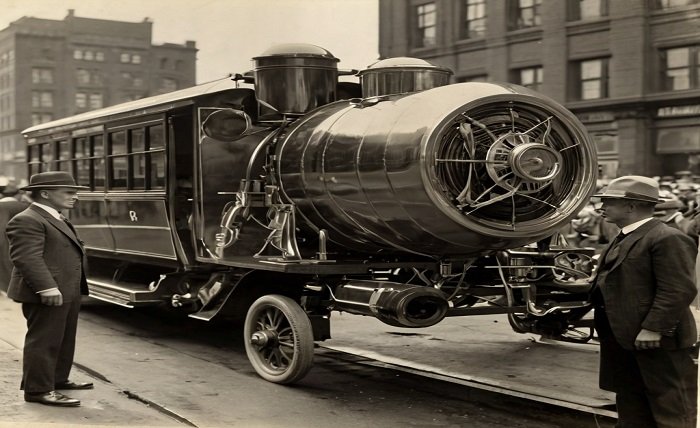Technology in the 1920s: The 1920s, sometimes known as the Roaring Twenties, were a decade marked by significant advances in technology, culture, and society. This blog article explores remarkable historical technical developments, showing how they transformed daily life and opened the door for more recent inventions.
Radio’s Ascent: Linking the World

The radio was among the most significant technological advancements of the 1920s. It transformed communication by enabling real-time access to entertainment, music, and news. Millions of homes had radios by the end of the decade, which helped to unite people worldwide and lay the groundwork for mass media.
Technology in the 1920s: Automobiles: Entering a New Chapter
In the 1920s, the automobile industry expanded rapidly. The common American could now buy cars thanks to Henry Ford’s invention of the assembly line. The Model T transformed the landscape of both urban and rural areas, sparking road infrastructure construction by becoming a symbol of freedom and mobility.
Aviation Takes Off: From Visions to Actualities
Technology in the 1920s: The 1920s saw significant aviation advancements. Charles Lindbergh’s remarkable solo transatlantic flight in 1927 captivated the world and revealed the promise of aviation. The emergence of commercial aircraft laid the foundation for the modern-day global connection we take for granted.
TV: The Invention of a New Media
The 1920s saw significant advancements in television technology despite its ongoing development. Pioneers John Logie Baird and Philo Farnsworth, respectively, created the earliest mechanical and electrical television systems. Their efforts would ultimately contribute to television’s widespread use in the ensuing decades.
Home Appliances: Revolutionizing Life at Home
Technology in the 1920s: The 1920s saw the introduction of numerous home appliances that revolutionized domestic life. More individuals had access to electric washing machines, refrigerators, and vacuum cleaners, which reduced domestic tasks and increased free time. These developments signaled the advent of contemporary household comforts.
Innovations in Telecommunication: The Telephone Boom
Despite its creation in the late 19th century, the telephone was not widely available until the 1920s. Communication over large distances became easier with the development of telephone lines and switchboard technology made communication over long distances easier. This link required the ability to communicate both personally and professionally.
Cinema: Hollywood’s Golden Age
The 1920s, dubbed “Hollywood’s Golden Age,” saw tremendous growth in the motion picture business. While silent films enthralled viewers, the arrival of “talkies” in 1927 with “The Jazz Singer” completely changed the film industry. Movie theaters became popular social hubs, and well-known movie actors such as Greta Garbo and Charlie Chaplin became household names.
In summary
A Decade of Legacy and Innovation
Technology in the 1920s: The 1920s saw some truly remarkable technological developments. These inventions, which included the development of radio, cars, television, and aviation in their early stages, laid the groundwork for the contemporary world. The 1920s served as a prime example of how technology can alter society, the economy, and culture.
FAQ
What was the most significant technological breakthrough of the 1920s? Arguably the most significant was the radio, which transformed entertainment and communication by allowing people to communicate in real-time across enormous distances.
What social effects did cars have in the 1920s? Vehicles, particularly reasonably priced ones like the Ford Model T, offered previously unseen mobility, revolutionized both urban and rural environments, and encouraged the growth of road networks.
Who were the major players in the 1920s television industry? Television industry pioneers John Logie Baird and Philo Farnsworth, respectively, created the first mechanical and electrical television systems.
What effects did appliances have on family life in the 1920s? Electric refrigerators, vacuum cleaners, and washing machines are examples of household gadgets that make living easier and increase free time for people.
What characterized Hollywood’s 1920s Golden Age? The 1920s saw a rise in the popularity of silent films, followed by the introduction of “talkies” in 1927. Movies like “The Jazz Singer” revolutionized the film industry and made movie theaters a popular gathering place for people.
